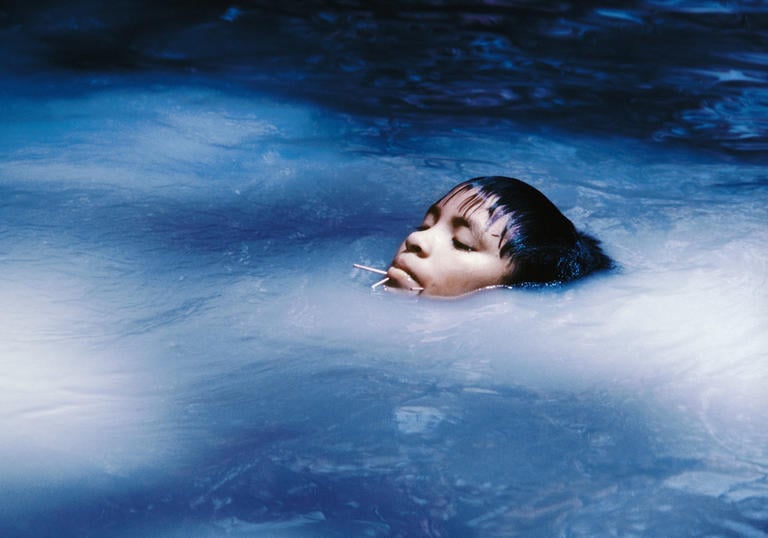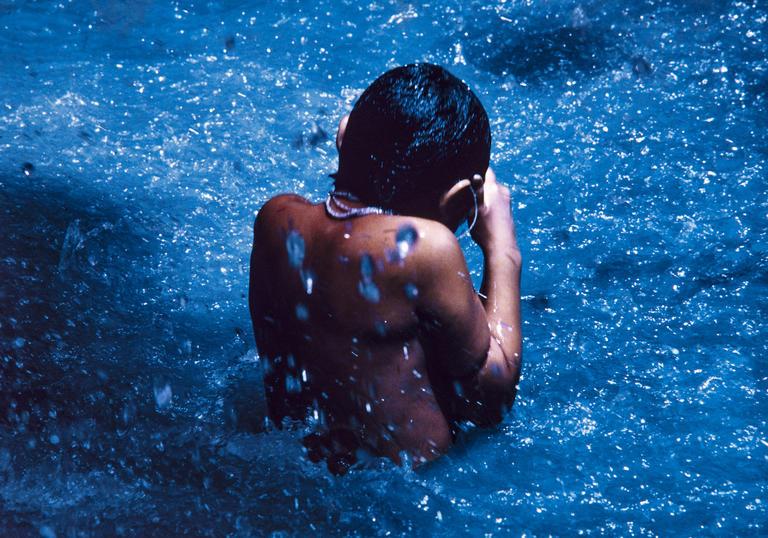Critical moment
In order to bring together the two key strands of Andujar’s work, Nogueira went to her house every week for two years to look through her archive and talk with the photographer.
As well as understanding the importance of activism to Andujar’s work, Noguiera was inspired by the publication of Kopenawa’s book, The Falling Sky in 2013, in which he shares his life and Yanomami culture. ‘Here was a new opportunity of having Yanomami people talking about the images, and narrating their stories,’ says Nogueira, adding even in Brazil when people saw Andujar’s photos of the Yanomami, ‘we tended to look at them as a very idealised and romanticised representation of an Indigenous personality or figure’.
The exhibition has toured the world and now arrives in London at a critical moment for the Yanomami who are facing encroachment from illegal gold miners emboldened by President Bolsonaro, bringing with them diseases such as Covid-19 – and as the UK prepares to host the United Nations’ Climate Change Conference, known as COP26, in November.
‘One of the important things about this exhibition is to try to make the agenda of the climate and environmental destruction more complex, in terms of showing people that the protection of the environment and the forests and the Amazonia is also a human rights problem,’ says Nogueira. ‘All these lands are not empty. The Indigenous populations living in those places are the ones that need to teach us how to manage those places and how to keep protecting them, because we have realised that we don’t know how to do this.’
He says the first time this exhibition came to Europe, he realised how the discourse about ‘saving the Amazonian rainforest’ was frequently about animals and lush forests, but no-one spoke about the Indigenous populations. ‘I could see people were very worried about the burning of the trees and the diversity of bees, but I was travelling with people that were being exterminated, and they were being completely ignored from that discourse, despite having this very deep knowledge about how to look after the rainforests.’
As Kopenawa says: ‘Claudia came to Brazil and the Yanomami lands, thinking about her project. Though not Yanomami, she is a true friend. She took photographs of childbirth, of women, of children. I did not know how to fight against politicians and non-Indigenous people, but she gave me the tools to defend our people, land, language, customs, festivals, dances, chants and shamanism. It is important to me and to you to see the work she did and respect the Yanomami people of Brazil who have lived in this land for many years.’
Photo credits:
The young Susi Korihana thëri swimming, infrared film, Catrimani, Roraima, 1972–74
Collective house near the Catholic mission on the Catrimani River, Roraima, infrared film, 1976
Susi Korihana thëri swimming, Catrimani, 1972-1976. Infrared film. © Claudia Andujar






